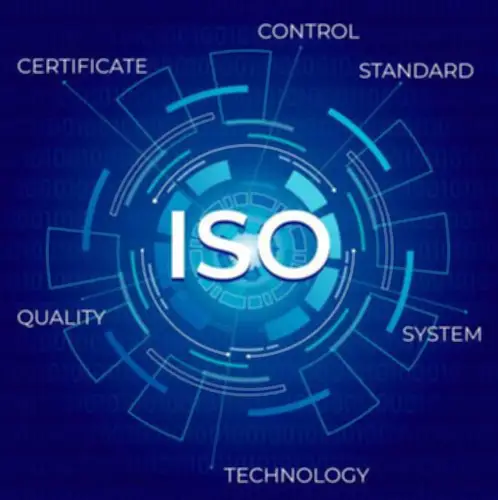If you could have very complicated enterprise logic, it would make sense to encapsulate it within our area entities. However for most functions, it’s often simpler to begin with an easier domain model, and solely introduce complexity if it is required by the project. This layer, the outermost layer of Onion, is a spot where all framework and expertise related stuff goes. It tends tobe essentially the most “thick” because it incorporates the implementations of the interfaces defined within the inside layers. Need anHTTP controller, a message listener or a database adapter (an implementation of repository interface defined on the area layer)? Since the domain adjustments the most — right here is the place the place you put all the brand new features, and enterprise requirements — itshould be as simple as potential to change and test.
Ui Layer
If we need anything from an external system or service, we can just create an interface for it and devour it. The larger layers of the Onion will take care of implementing that interface transparently. Onion Structure and clean architecture share basic rules like dependency inversion and domain-centricity. Clean Architecture, developed by Robert Martin, adds more specific guidelines about component group and information circulate.
Testability could be very high with the Onion architecture as a end result of every little thing depends on abstractions. The abstractions can be easily mocked with a mocking library such as Moq. To learn more about unit testing your initiatives in ASP.NET Core take a look at this article Testing MVC Controllers in ASP.NET Core. The clean separation provided by Onion Architecture permits teams to handle complex client necessities without sacrificing maintainability or testability. Teams should perceive not just tips on how to implement the architecture but why its ideas matter. With Out this shared understanding, builders may take shortcuts that undermine architectural integrity.
Including Swagger To Webapi Project
This doesn’t meanof course, that the domain lessons can’t have any dependencies. Like it the example above — the code makes use of Lombokannotations, producing the boilerplate which in any other case must be written by the programmer. This is one other variant that I have noticed in many huge solutions. Let’s say you might have around 100 interfaces and 100 implementations.
Working alone at your personal tempo is one of the only ways to study these ideas and make them yours. Now that we all know the theory let’s work out what are the advantages of the onion architecture so we are able to resolve whether to make use of it when writing our applications or not. Think About how to hire a software developer we wanted to vary database and move from Postgres to MongoDB. Palermo believes that we must always have the ability to do that with out touching the business logic in any respect.
- Onion Structure was launched by Jeffrey Palermo to offer a better way to build applications in perspective of better testability, maintainability, and dependability.
- Using dependency inversion throughout the project, depending on abstractions (interfaces) and not the implementations, permits us to modify out the implementation at runtime transparently.
- Entity design requires strict adherence to object-oriented design rules.
- Nevertheless, we’re going to do something different from what you are usually used to when creating Web APIs.
- Now add a Product Class that inherits the Id from the BaseEntity.
The immutability precept prevents many bugs and enhances code readability. Money, dates, addresses, and coordinates make excellent examples of worth objects. By implementing them correctly, you cut back primitive obsession and create extra expressive fashions. Whether you’re constructing web apps or enterprise methods, understanding Onion Structure provides a strong foundation for creating software program that may evolve with your small business wants. Now watch out as a result of I’m going to mention what are the core principles of the onion architecture. Finally, we received the data source layer where we cope with communication with other methods.
This structure is undoubtedly biased toward object-oriented programming, and it places objects before all others. At the center of Onion Architecture is the area model, which represents the enterprise and behavior objects. Around the area layer are other layers, with more behaviors. The Onion Structure relies closely on the Dependency Inversion precept. The primary concern of Jeffrey Palermo with the normal three-layer architecture is that it doesn’t forestall coupling between the business logic and the infrastructure.
What’s Git Squash? Clear Up Your Commits

The primary difference between “the classic” three-tier architectureand the Onion, is that every outer layer sees classes from all inner layers, not solely the one instantly under. Furthermore,the dependency course always goes from the outside to the within, never the other means around. This will be an Empty API Controller which will have API Versioning enabled in the Attribute and in addition onion design pattern a MediatR object.
Adapt it to your particular wants whereas honoring its core principles. The journey towards better architecture is steady, however the funding pays dividends in additional sturdy, adaptable techniques that can evolve with changing enterprise necessities. Whether Or Not building internet apps or mobile utility development initiatives, these patterns present a solid basis for clean UI structure. The presentation layer ought to stay thin, delegating to utility providers for actual work.

We will start off by creating a Clean Answer on Visual Studio. PS, I use Visual Studio 2019 Comunity which is totally FREE. To clearly understand the benefits of Onion Structure in ASP.NET Core Applications, we might want to research the issues with N Layer Architecture. It is likely certainly one of the most commonly used Resolution Architectures amongst .NET builders. For the later we use the library iban4j.orgto validate and create iban and bic objects.

We will have to register Swager inside the utility service container. Navigate to ../Startup.cs and add these strains to the ConfigureServices methodology https://www.globalcloudteam.com/. The presentation layer is where you’d Ideally want to put the Project that the Person can Access. Domain and Application Layer might be on the middle of the design. In N Layer Structure, the Database is usually the Core of the Complete Utility, i.e It is the only layer that doesn’t need to depend on anything else.
Onion Structure makes testing straightforward by isolating domain logic from external dependencies. Unit exams can concentrate on business guidelines with out database connections or API calls. Infrastructure implementations can be easily replaced with test doubles, supporting complete take a look at coverage throughout all layers. It’s the outer-most layer, and retains peripheral concerns like UI and tests.
